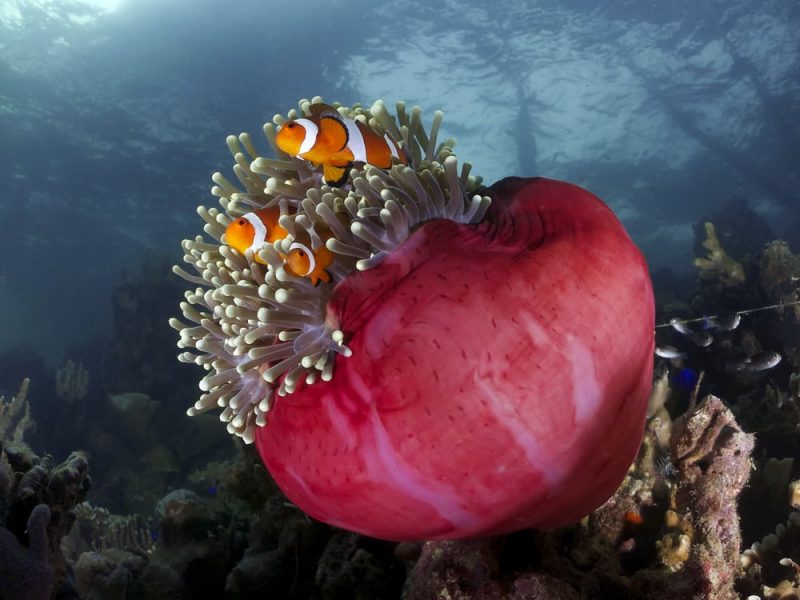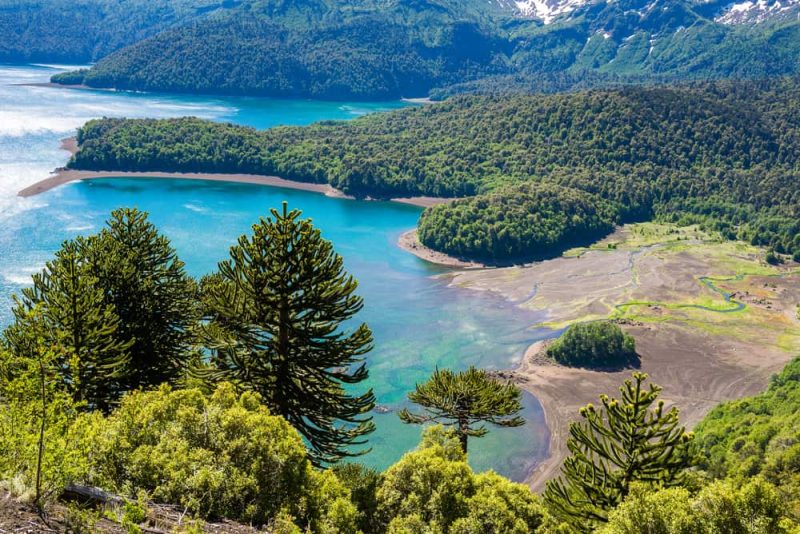When we talk about ecosystems we refer to the complex system of relationships that exists between communities of living organisms (biocenosis) and the environment in which they live (habitat or biotope). For instance: high mountains, savanna, coniferous forest.
This refers both to the mutual dependence between the various species of living beings involved, such as the flow of energy and / or matter that takes place in the physical environment, understanding these processes as an organized and reciprocal whole.
We must not confuse the ecosystem with the biome. This last term is used to refer to the different geographical areas or regions of the planet, taking into account its climate, its topography and also taking into account its animal or plant presence, but which function as homogeneous geographical units. The same biome can contain several ecosystems.
Within an ecosystem, various Trophic chains (alimentary) also called matter transmission, since there is a circuit of decomposers (fungi, bacteria, etc.), producers (vegetables, plants, phytoplankton, etc.) and consumers: herbivores (rodents, ruminants, etc.) and also primary and secondary predators (big cats, birds of prey, wild canids, etc.).
Ecosystem types
There are different types of ecosystems in the world, classified according to the environment in which they take place, namely:
- Aquatic ecosystems. They represent 75% of all existing ecosystems and take place under water. That means seas, oceans, rivers, lakes, and deep underwater niches, like the abyssal zone. Its species are physically and biochemically adapted to the aquatic environment, which in ideal conditions does not present too many variations with respect to its temperature and pH (perhaps with the exception of the cold and dark abyssal areas).
- Terrestrial ecosystems. They take place out of the water and on the earth’s surface, which also implies its possible variations in relief (mountains, plains, valleys, deserts, etc.), and which in turn imply important differences in temperature, oxygen concentration and climate. The diversity of species present in this set of ecosystems is enormous, with a numerical predominance of insects and then birds. Roughly they can be summarized as: desert, páramo, forest, jungle and savanna ecosystems.
- Mixed ecosystems. They are those that combine two physical media, such as water and land (amphibian) or air and land (air). The beings that inhabit these ecosystems tend to move mostly in one of the two, but require the other to rest, feed or even procreate, depending on the specific case.
- Microbial ecosystems. It refers to the various microscopic organisms that also have reciprocal relationships in their habitat and are essential, in the long run, for the support of the most complex forms of life.
Human impact on ecosystems
The ecological knowledge It is a scientific area of utmost importance for the preservation and defense of the planet’s biodiversity, currently under attack by the numerous industrial activities of man. These activities have a direct impact on the energy and materials of each ecosystem, and produce alterations in the delicate vital balance that characterizes them.
Pollution, overexploitation, deforestation and climate change caused by the influence of man on the planet, translate into extinctions, overpopulations, mutations and expulsion of microbial, animal and plant life from their respective habitats, which implies, in the long run , an attack against the very health of the human species.
Ecosystem examples

- Great hot deserts. The great hot deserts of North Africa, to cite one example, contain complex ecosystems that are much larger than is believed, characterized by vegetation adapted to drought and violent temperatures (hot during the day and cold at night), as well as a fauna of reptiles, birds, insects and small mammals that survive through burrowing systems.
- Humid rainforests. One of the richest biomes in ecosystems is made up of tropical forests, such as the Amazon. They are gigantic reservoirs of both plant and animal life, organized in food chains of a great variety. Its agile feline predators or constricting snakes, for example, are outnumbered by the supply of mammals, amphibians, birds, rodents and insects. Its lush and also abundant vegetation takes advantage of the fertile and humid soils due to the constant rain, as well as the decomposing organic matter that covers the soils (branches, leaves, fruits, dead animals, etc.).
- Savannah. A good example of a savanna is the great African plains, where the stationary drought allows only low-lying plant life, but large ruminant mammals (antelope, buffalo, etc.), preyed upon by large cats and canines (lions, hyenas). , etc.).
- Cold or coniferous forests. In these forests with a cold and humid climate, the abundance of plant life allows the proliferation of trophic chains adapted to terrestrial life or to the high crowns of trees, which can exceed 10m. The fauna is characterized by thick-haired mammals (bears, wolves, stoats), insects, rodents and birds.
- Polar ecosystem. Subjected to extremely low temperatures, the areas of the polar periphery are not without ecosystems. Antarctica, for example, despite presenting drastic changes in temperature and little sunlight during certain seasons, has a sea rich in plankton that supports a marine life cycle adapted to icy waters, as predators with hairy bodies and dense layers of fat, which can dive into the waters and fish. Many of these species hibernate during harsh winters, reducing their energy consumption to a minimum, or migrate to warmer latitudes, to return when the worst is over.
- Lotic ecosystems. This is the name given to those that take place on the margins of and within a river, stream or spring. They are characterized by adapting to the flow of water, which carries chemical nutrients, plant and even animal species.
- Lentic ecosystems. Unlike the lotics, the lentic they are characteristic of large closed bodies of water, which do not flow but remain stationary for most of the time: lakes, lagoons, estuaries and swamps. Vegetable life proliferates in them, given their high presence of usable organic matter and sediments, as well as the freshness of the climate and environmental humidity. Waders and amphibians proliferate in the fauna.
- The high mountain. Given its high relief, which can imply a drastic decrease in oxygen and great exposure to ultraviolet rays, the vegetation at these heights is usually sparse and at most consisting of shrubs or grasses. The fauna is predominantly insects, as well as reptiles and birds that take advantage of their flight capacity to prey.
- Coral reefs. They are one of the great concentrations of life in the underwater world of the planet, where life is sheltered in and around the enormous coral structures that constitute a natural barrier. Small species proliferate (tiny fish, crustaceans, mollusks) that take advantage of the abundance of organic matter for nutrition and decomposition processes, serving as food for larger fish.
- Deep ocean zones. These are extreme ecosystems with a low presence of animals, since their absence of light does not allow photosynthesis and therefore neither plant life. The fauna of these areas has adapted to the enormous environmental pressures and the low amount of nutrients, a product of the scarce fauna, through slow metabolisms and bioluminescent limbs to attract prey. Much of the microscopic and decomposing life is sustained by the rain of organic matter from the surface, as well as the use of geochemical energy.

